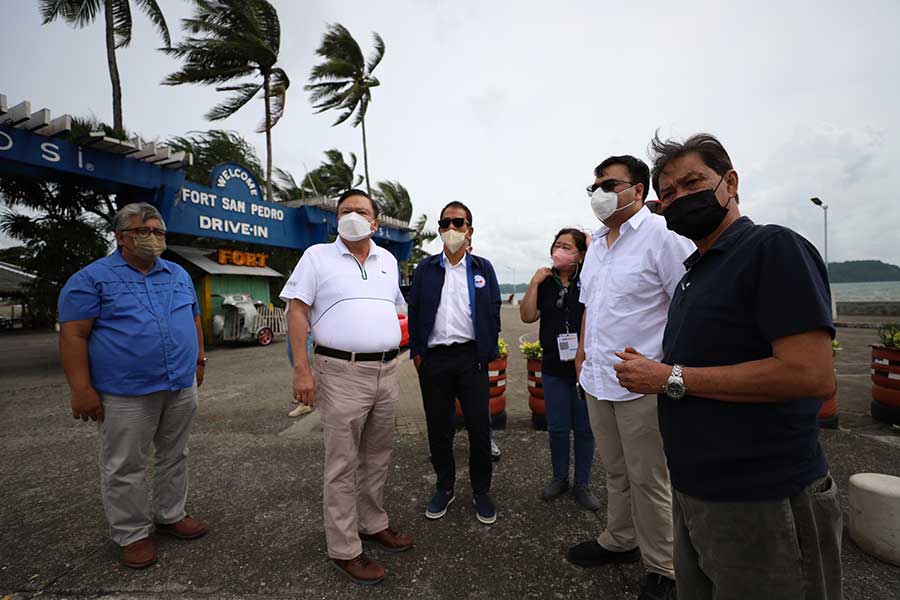
By Joseph B.A. Marzan
The local governments of Iloilo City, Iloilo province, and Roxas City signed a memorandum of understanding (MOU) with the Department of Human Settlements and Urban Development (DHSUD) in Iloilo City on Saturday to decrease the number of homeless people in their areas.
It was signed by DHSUD Secretary Jose Acuzar with Iloilo Governor Arthur Defensor Jr., Iloilo City Mayor Jerry Treñas, and Roxas City Mayor Ronnie Dadivas.
The MOU covers projects proposed by the three local government units which aim to relocate informal settler families, respond to climate change hazards, and create economic opportunities for relocatees.
The local chief executives personally spearheaded the presentation of their planned communities which they aim to be supported by the DHSUD.
Iloilo City’s coverage under the MOU includes the two priority housing projects at Brgy. San Isidro in Jaro district and at Brgy. Veterans Village in City Proper.
The San Isidro site will stand in a 2.7-hectare acquired property near the in-development Uswag Residential Complex, while the 4.2-hectare Central Bank site at Veterans Village will sit just outside the downtown Central Business District Heritage Zone and near Fort San Pedro.
Roxas City’s project, Paglaum Rise, is a 5-storey vertical housing development in a 3.1-hectare area on properties owned by the Roxas City government and other private owners in Barangay 5, and another in a 2.13-hectare private lot in Barangay 7.
The private lands are currently under negotiation for donation to their city government.
Dadivas says that they project to relocate 774 informal settler families in the city.
In Iloilo province, these include the proposed resettlement and relocation project of the Integrated Government Center and Urban Township in Santa Barbara town in a 6-hectare provincial government property near the Iloilo International Airport.
It will be used to construct a one-stop shop vertical facility that will hold government offices in a corporate environment, with options for commercial and light industrial establishments.
The specific developments include a 7-tenement, 5-storey building spanning approximately 400 square meters, with 60 units per building measuring 24-square meters each.
The cost per building, based on National Capital Region valuation is at P45 million with each unit costing P600,000 at P25,000 per square meter.
This project will also have options for on-site resettlement and off-site resettlement and relocation for informal settlers currently in the area.
Another project by the provincial government covered by the MOU is the Purok Resilience Program under Defensor’s Executive Order No. 333, a localized housing project which will relocate residents in danger zones and beside rivers, to nearer areas within their current localities.
BIGGER HOUSING PROGRAMS
The MOU signing with Acuzar is part of the department’s Pambansang Pabahay para sa Pilipino (National Housing for the Filipino) program under the Ferdinand Marcos Jr. administration.
The program aims to address the current housing situation in the Philippines through the ‘Home for Every Juan’ Program 1, focusing on the 6-million-unit backlog by constructing 1 million houses every year until 2028 with a preferential interest rate of 1 percent to buyers.
It aims to allow those who wish to buy homes with three options to choose from, which is seen to be pocket-friendly:
– Socialized housing at P580,000 payable for 30 years at P1,192 per month;
– Upgraded housing at P800,000 for 30 years at P2,637 per month; and
– Mid-rise and high-rise residences at P1.1 million at P3,638 per month.
The national government will fund P36,000 interest support per year per house, to a total of P36 billion pesos per year.
It will still be expected to benefit the government with P57.6 billion in Value Added Taxes at 12 percent, and a transfer tax of P66 billion from 8 percent of payments comprising sales transaction fees, capital gains tax, documentary stamp tax, and expanded withholding tax.
The Home for Every Juan Program 2, another component of the program, aims to give solutions to housing problems of poverty-stricken Filipinos.
It will utilize idle land and idle money, improve transportation and infrastructure, tap government construction, and implement an easy payment plan.
Funding for this program will be from the projected market value of the 2,000 hectares reserve area at P1 trillion at P50,000 per square meter after 30 years.
Two new mega-cities in Luzon will be developed to replicate Quezon City’s success from the last century, to steer congestion out of Metro Manila.
The North-South Economic Expressway will be constructed from Quezon City to Cabanatuan City in Nueva Ecija to achieve this purpose.




















